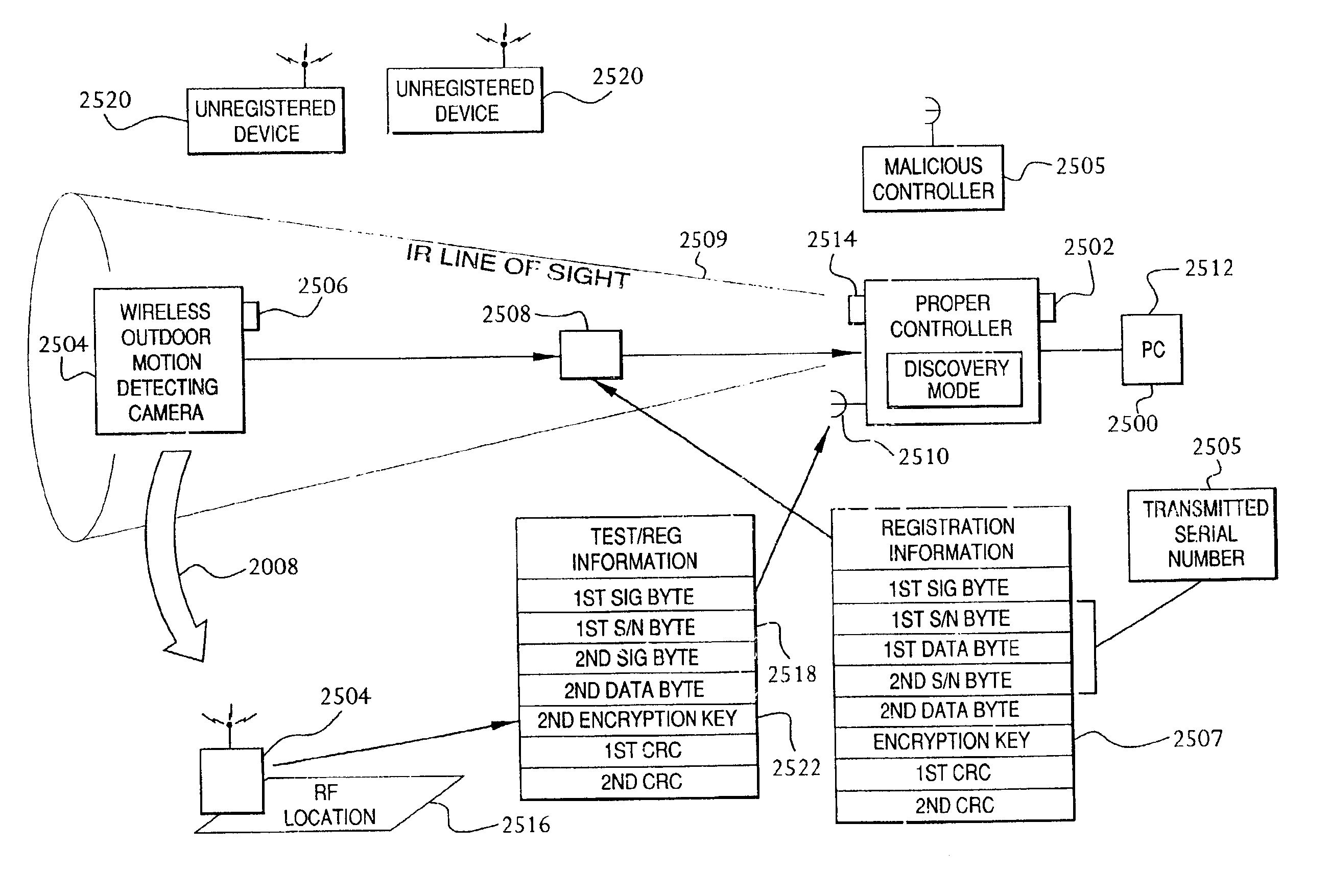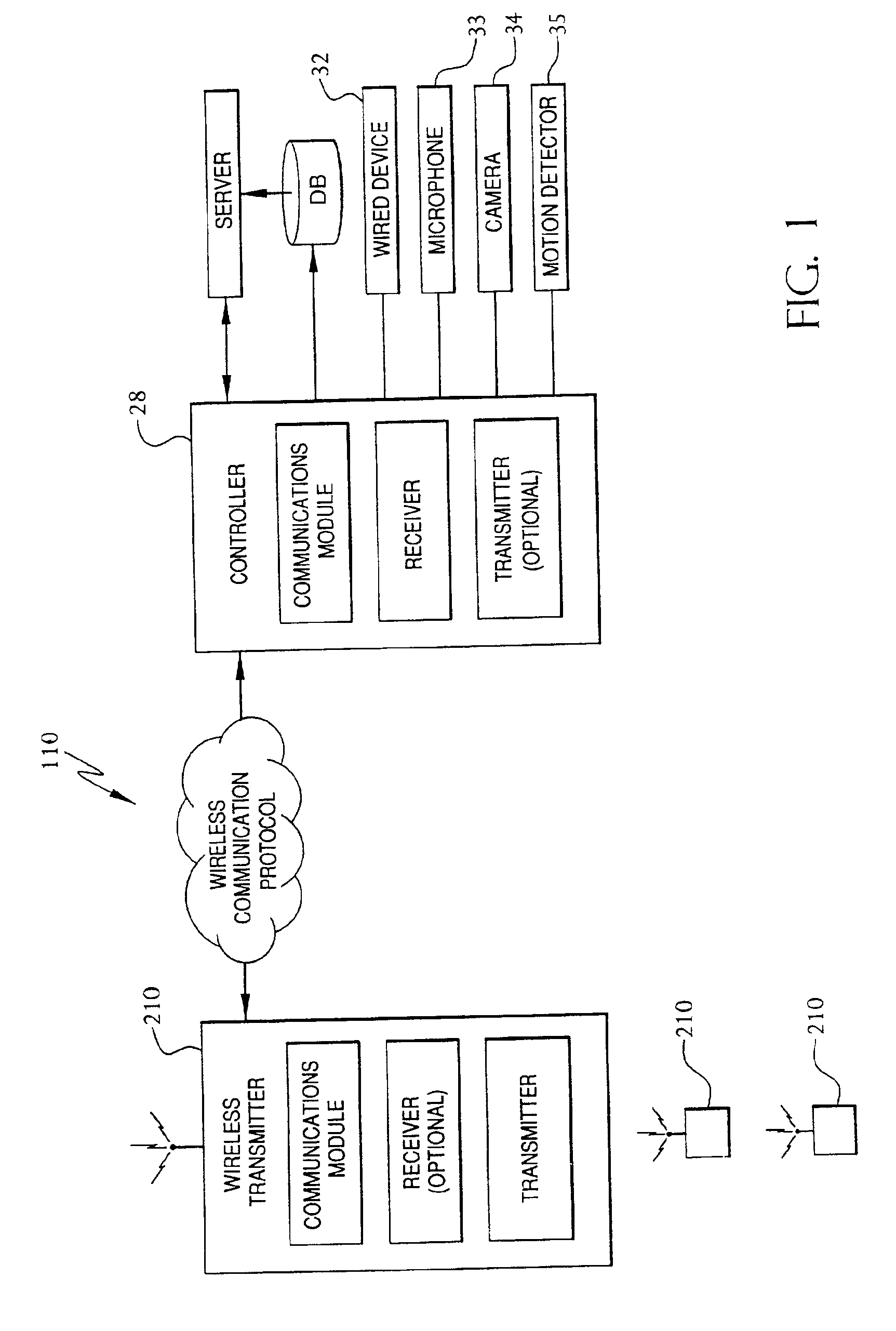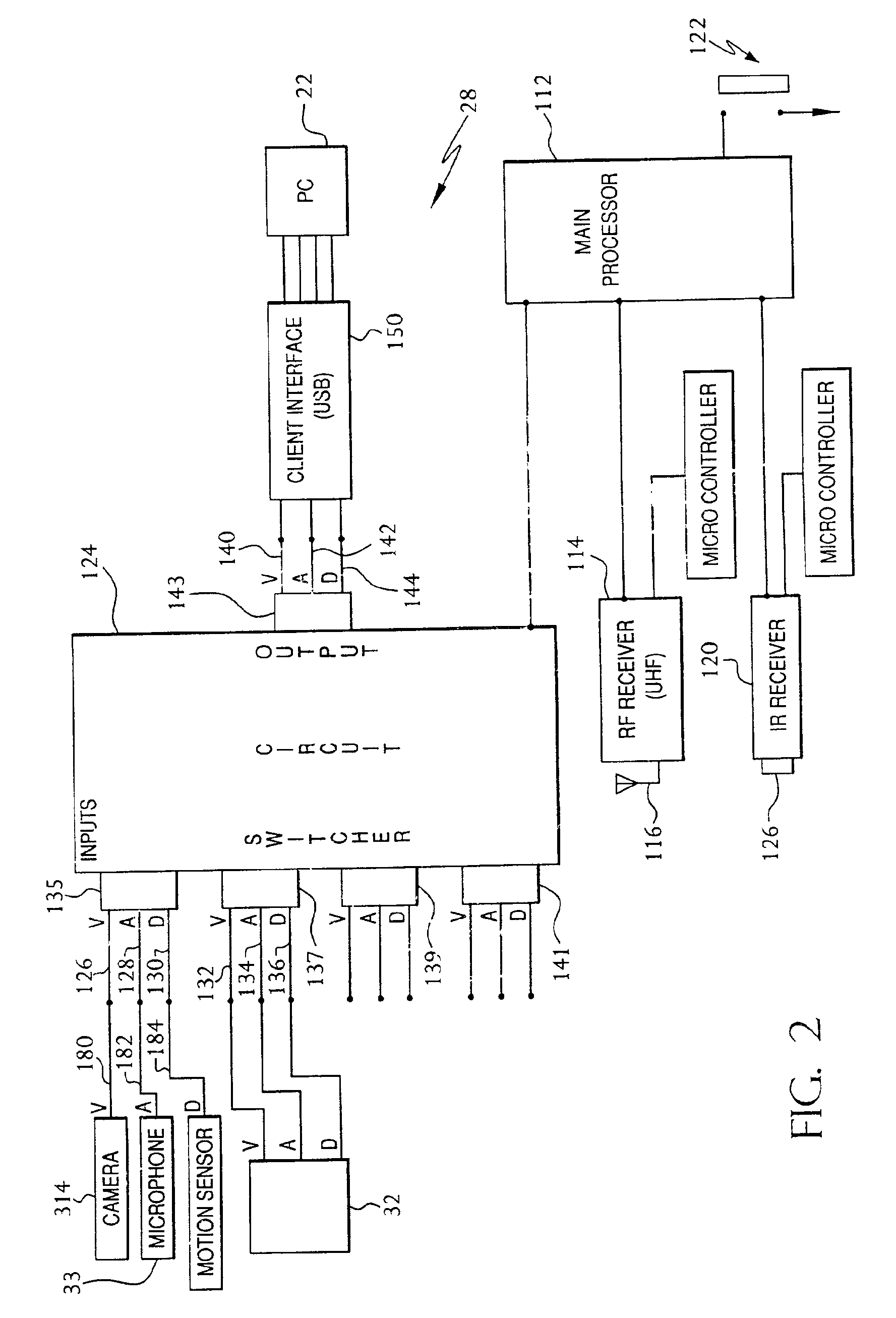Method and system for communicating with a wireless device
a wireless device and wireless communication technology, applied in the field of wireless communication systems and methods, can solve the problems of clock drift between clocks, inability to hard-code identifying information by the manufacturer, and inflexibility and lack of transmitter uniqueness in such a system
- Summary
- Abstract
- Description
- Claims
- Application Information
AI Technical Summary
Benefits of technology
Problems solved by technology
Method used
Image
Examples
third embodiment
[0105]FIG. 9 shows an illustrative system 10 in accordance with the present invention. For purposes of clarity, and not by way of limitation, an illustrative client-server based embodiment of the present invention is herein described. The system 10 illustrates how the wireless system 10 can be incorporated into a larger more encompassing client-server system. Similar references symbols are used throughout the embodiments to show like components.
[0106]System 10 may include an installation 12 and a remote site 14 that may be linked via a communications network 16. In practice, there may be more than one remote site 14 and installation 12, but only one each is shown to avoid over-complicating the drawing. Remote site 14 may be any suitable remote site that may include equipment such as, for example, one or more servers, mainframes, personal computers, or any other suitable computer-based equipment. Remote site 14 may include a network of suitable computers that may be interconnected in...
first embodiment
[0117]At least one device 32 may be interfaced with and controlled by each monitoring module 28. Connections between monitoring module 28 and the various devices 32 may be hardwired or wireless such as described in connection with FIGS. 1-4. Devices 32 may encompass any suitable device capable of being controlled or mediated by an external controller. Such devices may include, but are not limited to, a camera 34, a radio 36, a wireless smoke or fire detector 38, a wireless contact sensor 40, and a wireless light switch 41. Although not illustrated, other suitable devices may include, for example, various audio input and output devices, various visual displays, washers / driers, microwave ovens, cooking ranges, car alarms, plant watering devices, sprinkler, thermostats, carbon monoxide sensors, humidistats, rain gauges, video cassette recorders, radio tuners, or any other suitable device and the like.
[0118]One or more notification devices, such as pager 43, may also be incorporated int...
PUM
 Login to View More
Login to View More Abstract
Description
Claims
Application Information
 Login to View More
Login to View More - R&D
- Intellectual Property
- Life Sciences
- Materials
- Tech Scout
- Unparalleled Data Quality
- Higher Quality Content
- 60% Fewer Hallucinations
Browse by: Latest US Patents, China's latest patents, Technical Efficacy Thesaurus, Application Domain, Technology Topic, Popular Technical Reports.
© 2025 PatSnap. All rights reserved.Legal|Privacy policy|Modern Slavery Act Transparency Statement|Sitemap|About US| Contact US: help@patsnap.com



